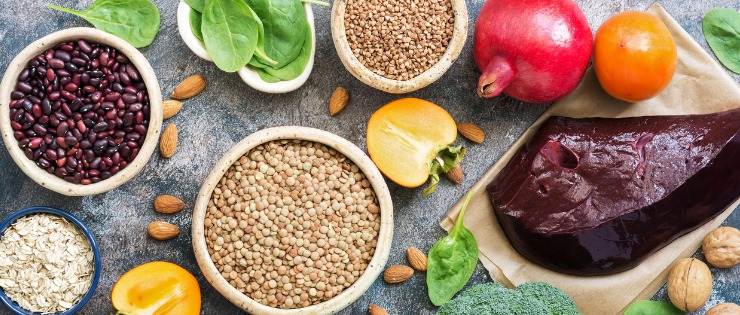
Iron is an essential mineral required for a healthy body. Our bodies can’t produce iron so we need to get it from food. Iron deficiency is one of the most common nutrient deficiencies in the world, affecting one-quarter of the world's population. Let’s look at what iron deficiency is, why it matters and how to make sure you get enough iron in your diet.
What is Iron and Why Do We Need It?
Iron is a mineral that is part of all cells in our bodies. Iron is part of haemoglobin that carries oxygen from the lungs throughout the body.
There are two types of iron – heme and non-heme iron:
- Heme iron – is only found in meat (animal products). It’s the most readily-absorbed form of iron and people who eat little or no heme iron are at an increased risk of anaemia.
- Non-heme iron – found in plant and animal products including eggs and dairy, non-heme iron is the most common form of iron. Vitamin C can improve the absorption of non-heme iron.
What is Iron Deficiency?
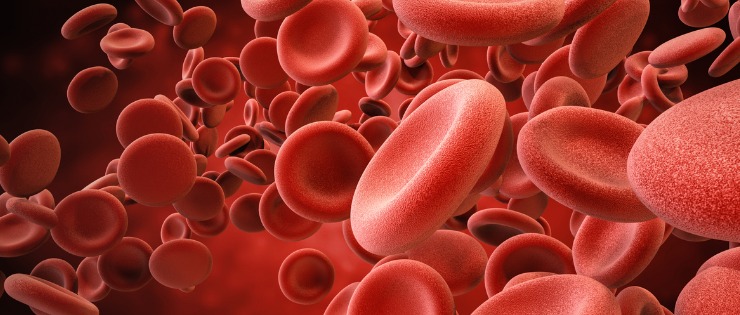
Iron deficiency occurs when there are insufficient levels of iron in the blood. Having low iron doesn’t mean you’re anemic, however low iron can lead to anemia if left untreated. Iron deficiency can cause poor memory and mental function which can cause poor performance at work and school.
Causes of Iron Deficiency
Iron deficiency can happen to anyone but the main reasons are:
Who is Most at Risk of Iron Deficiency?
Some people are more at risk of iron deficiency than others. Those most at risk include:
- People who eat a low iron diet
- Children - fussy eaters and a poor diet can lead to an iron deficiency (as children need iron for growth and development).
- Pregnant women - during pregnancy there is an increased volume of blood (between 30-50%). Mild anemia is common in pregnancy and causes an insufficient number of red blood cells to carry oxygen around the body. When anaemia is severe, there is a risk of premature delivery and low birth weight.
- Adolescent girls and women - girls and women who are menstruating are at risk of iron deficiency.
- Frequent blood donors - people who donate blood frequently can deplete their iron stores, resulting in iron deficiency anemia.

Signs & Symptoms of Iron Deficiency
The body needs iron to function sufficiently. In the early stages of iron deficiency the body may show no signs or symptoms. Some people may recognise symptoms when iron deficiency anaemia occurs.
Symptoms of iron deficiency include:
- Feeling tired and weak
- Poor performance at school or work
- Struggling to maintain body temperature
- Poor immunity leading to being more susceptible to infection
Iron Deficiency & Anaemia - What is it?
Anaemia is a condition where the body doesn’t have enough red blood cells or the level of haemoglobin in the body is lower than normal to carry oxygen from the lungs around the body. People most at risk of anaemia are vegetarians, premature babies, children during phases of high growth and menstruating women. Like iron deficiency, anaemia can occur from blood loss, a poor diet or medication causing problems with the red blood cells.
Doctors may diagnose anaemia through a blood count and tests to look at the size and shape of the red blood cells. A doctor may also conduct a physical examination to check on the lungs and heart.
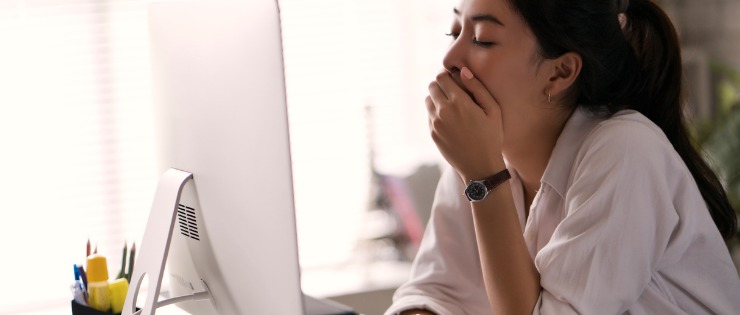
Symptoms of anaemia include:
- Shortness of breath
- Tiredness
- Pale skin
- Headaches
- Cold feet and hands
- Heart palpitations and chest pain
- Low Iron (the most common type of anaemia, other forms of anaemia include low vitamin B12 levels, lead poisoning, low folic acid levels and haemolytic).
Symptoms of anaemia during pregnancy include:
- Fatigue
- Rapid heartbeat
- Shortness of breath
- Pale skin
- Cold feet and hands
- Difficulty in concentrating
Treatment for Anaemia
The treatment depends on the severity of the anaemia. It may include:
- Iron infusion or injection
- Blood transfusion
- Antibiotics for any infections
How is Iron Deficiency Detected?
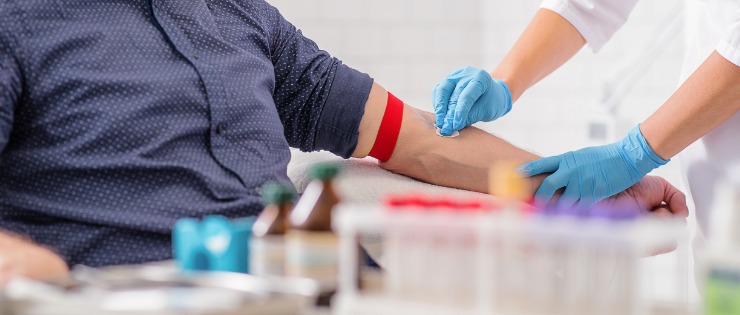
Many people don’t know they are iron deficient because they don’t have any noticeable symptoms of mild deficiency. It’s often not until a patient has anaemia that any symptoms are present. Therefore, high-risk groups such as pregnant women are routinely screened to check their iron levels. A blood test, including an assessment of iron status and body stores, analyses the amount of iron in blood. Once diagnosed, iron deficiency is simple to treat.
The most common tests for iron deficiency anemia are:
- Physical exam - the doctor may check for bleeding. Look to see if your tongue or lining of your eyelids are pale. They will squeeze your fingernails to check if they are brittle and how quick they refill with blood. Listen to your heart for irregular heartbeats. Listen to the lungs for uneven breathing. Push down on your abdomen to check the size of your liver and spleen.
- Blood work (tests) - the doctor may order a complete blood count (CBC) to check your red blood cell counts, hemoglobin or hematocrit levels and mean corpuscular volume (MVC). Iron tests to measure the amount of iron in the blood. Ferritin tests to measure how much of your body’s stored iron has been used. Reticulocyte count to check if you have lower than normal numbers of young red blood cells. Peripheral smear to see if your red blood cells are smaller or paler than they should under a microscope.
- Gastrointestinal bleeding tests - your doctor may order some procedures to confirm if gastrointestinal bleeding is causing your iron deficiency anemia. The doctor may request a fecal occult blood test to check for blood in your stools. An upper endoscopy and a colonoscopy.
Treatment for Iron Deficiency
A dietician can advise on how to increase your intake of iron. Intake is important, but so is absorption of iron. Eating sources of Vitamin C at the same time as iron-rich foods increases the absorption rate.
In severe cases of deficiency, particularly in children, a doctor may prescribe a blood transfusion, injections of iron or intravenous iron therapy.
Treating iron deficiency often includes iron supplements. A doctor may also check that there are no conditions that cause malabsorption of iron or loss of blood.
Iron Supplements
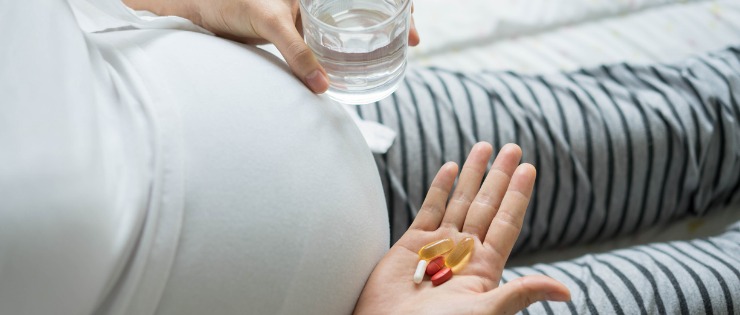
People with low iron levels are often recommended to take iron supplements. They are effective at improving levels quickly but patients must follow their doctor’s instructions. Long-term use or overdose can cause iron to accumulate in the brain and organs and can be fatal as the body isn’t efficient at excreting excess iron.
Side Effects of Iron Supplements
Most people taking iron supplements will notice one or more side effects. A doctor may recommend a smaller dose to begin so the body can get used to the supplement. Common side effects include:
- Dark coloured (black) stools
- Constipation
- Nausea
- Vomiting
- Diarrhoea
Risk of Iron Toxicity from Supplements
The body uses a hormone and the digestive tract to regulate the amount of iron the body absorbs and stores. However, people are at greater risk of iron toxicity (poisoning) and iron overload through supplements. Iron toxicity can happen suddenly or gradually.
Iron is usually bound to protein and doesn’t cause harm but in cases of iron toxicity, there is a much greater chance of ‘free’ iron circulating in the body. Free iron is a pro-oxidant that causes cell damage.
Symptoms of iron poisoning include pain, nausea or vomiting. Over time, there is an increased risk of arthritis, liver problems, diabetes, heart disease and cancer.
How Much Iron Should We Be Consuming?
The amount of iron your body requires depends on your age, gender and life stage.
The following is the Recommended Dietary Allowance (RDA) of iron for healthy people.
Age/ Group: Babies
0-6 months: 0.27 iron (mg/day)
7-12 months: 11 iron (mg/day)
Age/ Group: Children
1-3 years: 7 iron (mg/day)
4-8 years: 10 iron (mg/day)
Age/ Group: Females
9-13 years: 8 iron (mg/day)
14-18 years: 15 iron (mg/day)
19-30 years: 18 iron (mg/day)
31-50 years: 18 iron (mg/day)
51 years plus: 8 iron (mg/day)
Pregnant women: 27 iron (mg/day)
Breastfeeding women: 25 iron (mg/day)
Age/ Group: Males
9-13 years: 8 iron (mg/day)
14-18 years: 11 iron (mg/day)
19 years plus: 8 iron (mg/day)
Food Sources of Iron
Most people can prevent iron deficiency by eating a well-balanced diet that includes meat, vegetables, fruits, legumes, dairy, whole grains, eggs and nuts.

Including foods that are a good source of iron together with foods that contain vitamin C will improve absorption and further reduce your risk of iron deficiency. Vitamin A helps release stored iron so not enough vitamin A can also lead to an iron deficiency.
There are many iron-rich foods we can eat to keep iron deficiency and anaemia at bay.
Meat
Red meat is an excellent source of heme iron. Meat is a popular source of protein and iron for many people. Meat is also rich in B vitamins, zinc and selenium.
Organs (offal) are high in iron including liver, kidneys, brain and heart. Organs are also high in the nutrients selenium, vitamin A and choline.
Shellfish
Most shellfish is high in iron, particularly mussels, oysters and clams. While clams aren’t eaten often in Australia, a 100g serving of clams contains 28 mg of iron (155% of RDI). The iron in shellfish is heme iron, which is more readily absorbed by the body than non-heme iron found in plants.
Green Vegetables
Leafy green vegetables are a good source of iron for vegetarians and non-vegetarians alike.

Even though spinach is a non-heme source of iron, it is high in vitamin C which boosts the iron absorption. Eat leafy greens with olive oil to help the body absorb carotenoids. Broccoli also contains iron, but it’s an even better source of vitamin C which helps absorb iron from other foods on the plate like meat.
Legumes
For vegetarians, legumes are a good source of iron. Beans, lentils, chickpeas, peas and soybeans contain iron, folate, magnesium and potassium.
Dark Chocolate
Even a small serving of dark chocolate contains an impressive amount of iron as well as copper, magnesium and prebiotic fibre. Dark chocolate can improve cholesterol and reduce the risk of stroke and heart attack. Eating chocolate with a minimum of 70% cocoa will provide the maximum health benefits.
Foods High in Iron
Cooked oysters: 10.2 mg
Organs (liver): 5.2-9.9 mg
Fortified instant cooked cereal: 4.9-8.1 mg
Pumpkin seeds: 4.2 mg
Lentils, cooked: 3.3 mg
Spinach, cooked: 3.2 mg
Beef, cooked: 3.1 mg
Kidney beans, cooked ½ cup: 2.6 mg
Sardines: 2.5 mg
Chickpeas, cooked: 2.4 mg
Lamb, cooked: 2.3 mg
Prune juice: 2.3 mg
Minced beef: 2.2 mg
Tomato paste, ¼ cup: 2.2 mg
How to Increase the Absorption of Iron From Foods
Foods high in vitamin C are the most effective at increasing the amount of iron absorbed in the body. The following foods provide a minimum 20% of the recommended daily intake of vitamin C. It's important to eat vitamin C-rich foods at the same time as foods high in iron to improve absorption rates.

Vitamin C-rich foods
- Broccoli, cooked half a cup: 39 mg
- Orange, raw, 1 medium sized: 70 mg
- Red capsicum, raw ½ cup: 142 mg
- Green capsicum, raw ½ cup: 51 mg
- Snow peas, cooked ½ cup: 38 mg
- Cauliflower, cooked ½ cup: 28 mg
Foods That Can Block the Absorption of Iron
You may be consuming enough iron-rich foods but it’s possible you could consume foods that hinder your body absorbing the iron.
- Tannins found in tea, coffee and wine bind to iron and carry it out of the body
- Some whole grains such as bran reduce iron absorption
- Soy proteins make it difficult to absorb iron from plant sources
- Calcium and phosphorous reduce absorption of iron from plant sources
Is Too Much Iron Bad for You?
Everyone needs iron for a healthy body function but too much iron is toxic. The digestive tract is effective in restricting how much iron is absorbed in most people. The iron-regulating hormone, hepcidin, increases and decreases depending on the level of iron stores. If hepcidin is suppressed, it can lead to iron overload, an excess of iron in the body’s tissues.
Hemochromatosis is a disease caused by significant iron overload. Excess iron stores in organs, mainly the heart, liver and pancreas. If untreated, hemochromatosis can damage organs and joints and can be fatal.
Symptoms include joint and abdominal pain, fatigue and weakness. There is often a genetic link to hemochromatosis and while it’s present at birth, symptoms rarely develop until midlife. Some people don’t experience any symptoms.
Treatment is as simple as giving blood regularly or removal of blood by venesection. Because much of the iron is in red blood cells, iron levels lower after donation.
Are You Getting Enough Iron in Your Diet?
With symptoms of low iron levels not always obvious, it’s important that everyone is mindful of the amount of iron they consume in their diet. Eating foods rich in iron accompanied with vitamin C for improved absorption is enough for most people. But if you’re in a risk group for low (or high) iron levels, see your doctor.
Please note: Tammy's blog is general advice only. For further information on this topic please consult your healthcare professional.